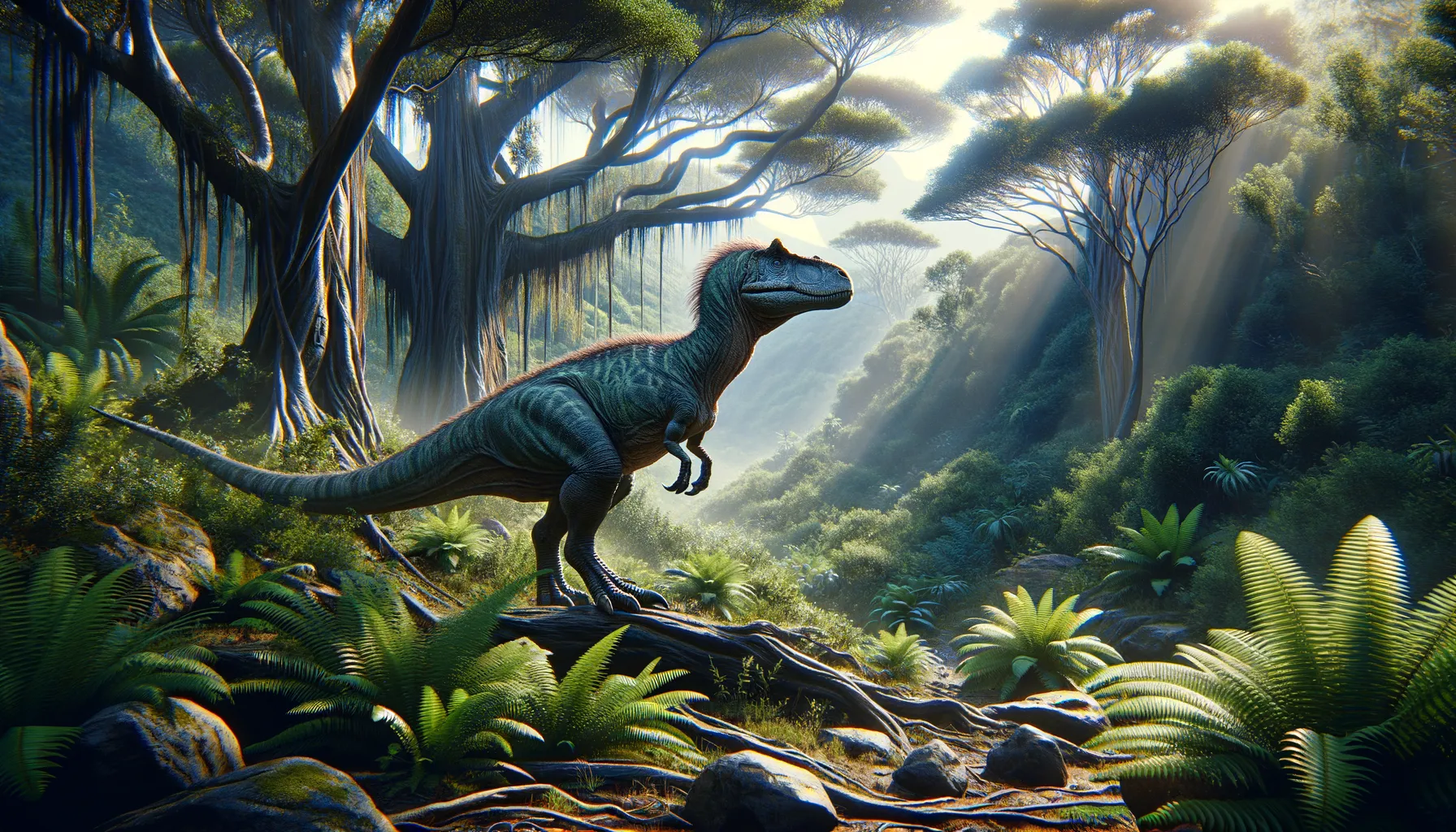
Ngwevu
A Jurassic marvel with agile strides.
Period
Jurassic
Length
Roughly 3 meters in length.
Height
Around 1.5 meters at the hips.
Weight
Approximately 300-400 kg.
Ngwevu lived during the early Jurassic period and is known from fossils found in South Africa. It was a relatively small dinosaur that walked on two legs and had a body structure that suggests it was both agile and capable of maneuvering well in its environment. The discovery of Ngwevu has provided paleontologists with more insights into early dinosaur evolution and their adaptability in various landscapes.
Diet
Ngwevu was likely an omnivore, feeding on a mix of plants and small animals. Its teeth indicate it could process a variety of vegetation along with occasional smaller prey.
Hunting
It didn't actively hunt large prey, but it may have foraged for small animals or insects. Its strategy would have involved quietly searching through underbrush for food.
Environmental challenges
Ngwevu faced challenges such as changing climate conditions and evolving ecosystems. It had to adapt to fluctuations in available plant species, which affected its diet. Predation by larger carnivorous dinosaurs also posed a constant threat. Despite these pressures, Ngwevu displayed evolutionary resilience, managing to thrive in the dynamic Jurassic landscape.
Speed
Likely moderate, due to its build.
Lifespan
Estimated to be around 20 to 30 years.
First discovery
Discovered in South Africa in the early 2000s.
Fun Facts
- Ngwevu is a relatively new discovery, officially described in 2019 after being mistaken for a similar dinosaur for decades.
- The name 'Ngwevu' means 'grey' in a South African language, referencing the color the bones appeared when first discovered.
- Ngwevu lived around 200 million years ago during the Early Jurassic period in what is now South Africa.
- This dinosaur belongs to a group of plant-eating dinosaurs known as sauropodomorphs, the ancestors of the giant long-necked dinosaurs.
- Despite being a plant-eater, Ngwevu had sharp teeth, which might have helped it process tough vegetation.
- Ngwevu was relatively small compared to other dinosaurs, likely measuring around 3 meters (10 feet) in length.
- The discovery of Ngwevu has helped scientists understand more about dinosaur diversity during the Early Jurassic period.
Growth and Development
Ngwevu exhibited a steady growth pattern from hatchling to adult. Its relatively small adult size suggests rapid bone growth phases during early life, reaching maturity relatively quickly. Patterns in its fossilized bones show a mix of rapid growth spurts followed by periods of slower growth as it aged. This growth strategy likely aided its survival in environments with fluctuating resources.
Habitat
Ngwevu inhabited a range of environments, including forests and floodplains. Its fossils suggest it lived near bodies of water, which supported a diverse ecosystem. The region provided ample vegetation and smaller fauna, ideal for its diet. The lush, changing environment offered both challenges and opportunities for Ngwevu's survival.
Interaction with other species
Ngwevu coexisted with various other dinosaur species in its habitat. It may have competed with other herbivorous or omnivorous dinosaurs for food resources. Its presence in the ecosystem also provided a food source for larger carnivorous dinosaurs. Cooperative or neutral interactions with contemporaneous species would have been common as they navigated shared environments.
Natural lifespan
Ngwevu likely lived naturally for 20 to 30 years.
Reproduction
Ngwevu is believed to have laid eggs, similar to most dinosaurs. Reproductive strategies likely involved nesting in secluded areas to protect eggs from predators. It may have laid multiple eggs at a time, increasing the chances of offspring survival. Parental care post-hatching remains uncertain, but guarding nests might have occurred.
Social behaviour
Ngwevu was possibly social, living in small groups or pairs. Such social structures would have aided in foraging and protection from predators. Interaction within groups could have involved coordinated movements for safety and efficiency. Social behavior might have also played a role during mating seasons.
Fossil locations
Ngwevu fossils have been predominantly found in South Africa. The localities offer rich insights into the dinosaur fauna of the early Jurassic period. Fossil samples have provided critical data for understanding its biological and ecological characteristics. These discoveries have furthered research into the diversity of early dinosaurs in the region.
